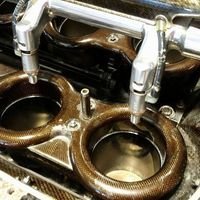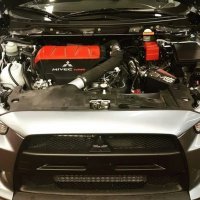Knock Sensor Starting Points For Monitoring
Announcements
-
Similar Content
-
Latest Posts
-
By weikleenget · Posted
Hi again all, I’ve tried doing some searching on the topic but couldn’t find the answer I’m looking for. I deleted my clutch booster because it had an air leak and was squealing like a hog, and now my clutch has very poor pedal feel and the friction zone is way too small, so I believe I need a bigger diameter clutch master cylinder to compensate for not using the booster. I found a Wilwood option that’s 3/4” for a good price and will fit my 3AN clutch line, but all the firewall adapters I see online such as RB factory or Chase Bays are listed as RWD only (GTST/GTS). Link below. https://rbfactory.shop/products/nissan-to-wilwood-girling-clutch-master-cylinder-adapter My question is if these adapters will also fit a GTR, and if anyone has experience using a 3/4” CMC without the booster, my clutch is a Nismo coppermix twin plate. Thanks, always appreciate the advice! -
Catching up on a post, I've replaced the external shark fin with a small 4g antenna (no further drilling, just a 1mm embiggening of the existing hole, and run that to where the dual battery models have the battery in the left rear guard. No idea what the factory antenna did, but removing it had no impact on anything I use, according to the US manual the GPS antenna is in the dash and it still works fine Also ended up stealing battery power from one of the amps and ACC power from a unit nearby to add an ACC relay to power it. The mounted the booster, wifi, power socket and antenna splitter in the rear left guard out of the way, all out of site with the boot trims in
-
What drama? The only drama you're going to have is the near constant work to maintain all those sphericals. I only have sphericals in my front caster rods and front upper CAs (because both of these are near compulsory in an R32). I have had the front arms out of my car 34 times already this month, and if the new replacements arrive today, I will have them out and apart again tomorrow. Chasing clicking and clunking that comes from sphericals being a.....poor choice for a road car. Moisture and dirt are not their friends. I have been contemplating a change to my rear subframe that would require me to use sphericals in my lower CAs. And.....I don't want to have them that close to the road.
-
Did you need anything else you've already done? If you had it before... and liked the changes after, then supposedly it'd be more of the same. The idea about most suspension arms is to tune geometry that the OEM arms max out at/can't handle because they weren't designed to have the car setup in such a way that 'looks good'.
-
By drifter17a · Posted
I have replaced everything on my r34 including suspension to Miester R, all rear subframe bushes to poly, all arms to metal adjustable and same in front. only thing I haven't touched is the front lower control arm. Should I? what improvement can i expect ? I mean the one on the link below? Car drives perfectly, it is just me thinking everything is either puly bush or hard bearing type so should also do lower control arm front but do I really need it ? https://www.japspeed.co.uk/product/suspension/adjustable-arms/nissan-200sx-s13-s14-s15-skyline-r32-r33-r34-adjustable-suspension-front-lower-control-arms/?gad_source=1&gclid=Cj0KCQiAo5u6BhDJARIsAAVoDWs5V_PauQPf0kx3zFCaA4tOC9Q7JSIsfJWma_jAPN2f1sJA686djOwaAidgEALw_wcB
-





Recommended Posts
Create an account or sign in to comment
You need to be a member in order to leave a comment
Create an account
Sign up for a new account in our community. It's easy!
Register a new accountSign in
Already have an account? Sign in here.
Sign In Now